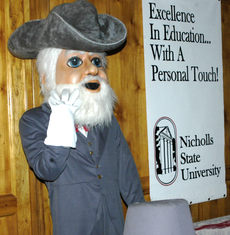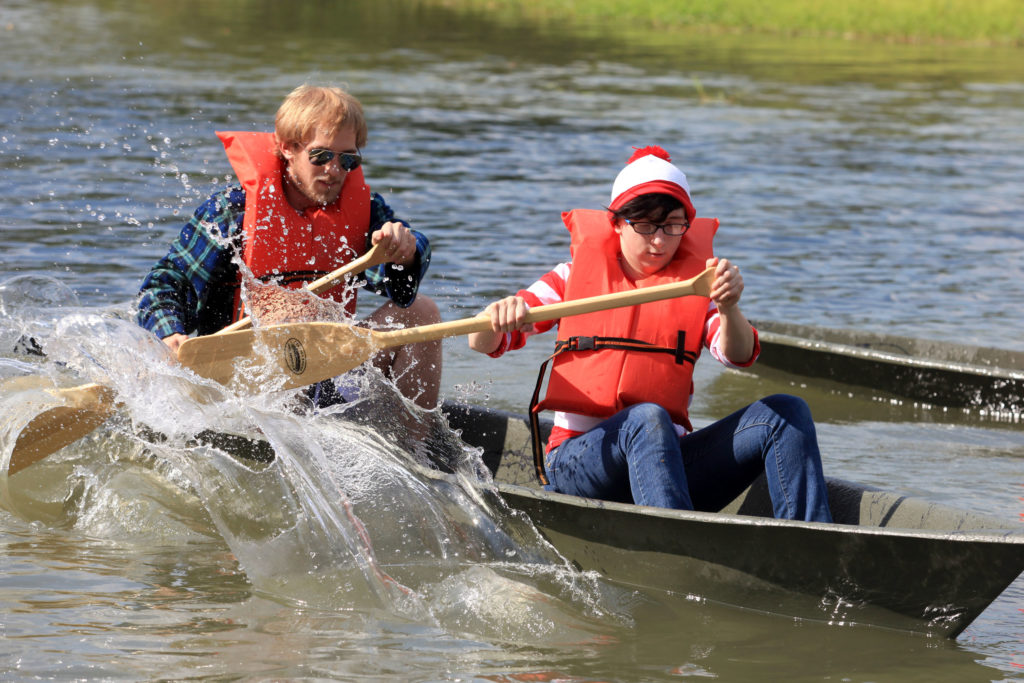The Archives and Special Collections Department, located in Ellender Memorial Library, is celebrating Nicholls’ 60th anniversary with memorabilia. The collection went on display March 12 in the Ellender room and will continue through April 30.
The display covers topics such as the origins of the University’s name, special events that have been held, staff members and changes that have occurred over the years.
Nicholls, first opened Sept. 23, 1948, as Francis T. Nicholls Junior College of Louisiana State University. The college was named after Louisiana governor, Francis Tillou Nicholls, who took part in the reconstruction of the state after the Civil War.
In 1956 Nicholls separated from LSU and became known as Francis T. Nicholls State College. In 1970, the state legislature changed the name to Nicholls State University. It was Gov. John McKeithen’s signature on June 23 of that year which officially gave Nicholls its university-level status.
Three weeks after the college opened, a tradition began that had freshmen shave their heads as part of an initiation. The point of this activity was to have the students interact with one another. This ritual lasted into the ’70s, according to a picture caption in the display.
The annual pirogue races on Bayou Lafourche began in 1953, when members of the ROTC organized the first race from Raceland to Thibodaux.
Another event that occurred throughout the ’60s and ’70s was the selection of random children to serve as the official mascot – the “Little Colonel.” The child was usually the son of a faculty member and would dress in the colonel uniform at athletic events and parades.
Western Week or “Frontier Week” began in the spring of 1956. The festival, which was co-sponsored by the Clodbusters and the Women’s Recreation Association, included a corn-husking contest, sack races, cow milking, a professor dunk, hay rides, egg tosses, a car bash and more. Two of the stranger and more unusual competitions were the tobacco-chewing and beard-growing contests. Western Week was discontinued after 1990.
Not all of the traditions that took place over the years were legal. In the early ’70s, Nicholls, like many other institutions, had a group of students that would streak across the campus.
The display in the Ellender room has a photograph of an officer in pursuit of one individual engaged in the fad of the day.
In display cases throughout the exhibit are different “firsts” to grace the University. There is a picture of the first snow-covered Nicholls campus on Feb. 12, 1958, as well as the publication of the first yearbook, La Pirogue, in 1949.
The periodical received its name from alumnus John Legendre. Legendre won a contest that allowed him to name the book.
Also on display is an exhibition devoted to the start of the Chef John Folse Culinary Institute – Oct. 11, 1994.
The history of the library, its location and its name changes are another section of the display. The original library consisted of only two rooms on the second floor of Elkins.
In 1965, the new library was constructed and named Polk Hall in honor of the first Episcopal Bishop of the Diocese of Louisiana, Leonidas Polk.
In 1980, the library moved to its present location and was named Ellender Memorial Library after the late Sen. Allen J. Ellender of Terrebonne Parish.
Also available for viewing are brief biographies of the past and present deans and presidents of the University. Included are Charles C. Elkins, Vernon F. Galliano, Donald J. Ayo and Stephen T. Hulbert.
Sports are another part of the history of the University. There is a display devoted to the 1976 Western Divisional Championship, “Big Red” Nicholls baseball team. There is also a section that is dedicated to the University’s past football and basketball.
Nicholls has seen a number of famous faces and shows over the years. Lynyrd Skynyrd, Travis Tritt, Third Eye Blind, Charlie Daniels, Tommy Davidson, George Carlin, Carrot Top and The Black Crowes, are just a few of the guests the Student Programming Association have hosted.
Nicholls has seen many changes over its history. The “Nicholls State University: The First 60 Years” exhibit compiles and condenses the history of the University into a source for students to experience.








